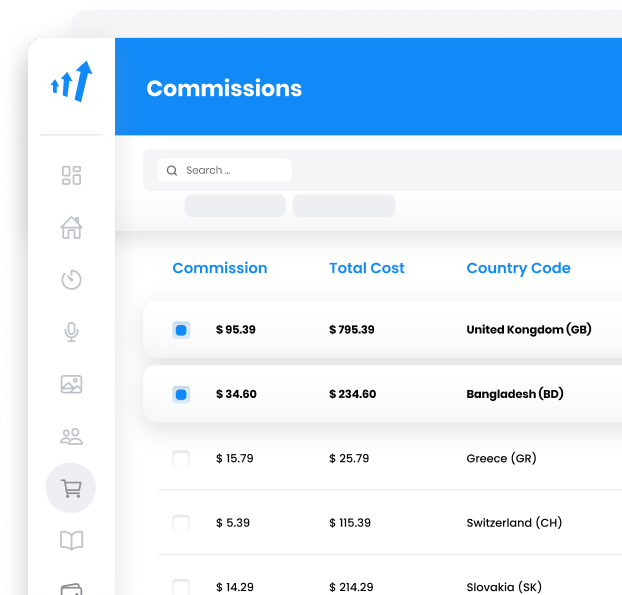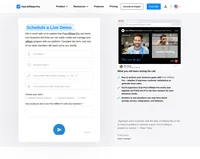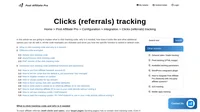What is Link Cloaking?
Link cloaking is an essential technique predominantly used in affiliate marketing to disguise the destination URL of an affiliate link. This process involves creating a redirect link that masks the original affiliate URL, making it appear cleaner and more trustworthy to users. The cloaked link usually incorporates the website’s domain name, enhancing its appearance and memorability.
For instance, a cumbersome URL like https://affiliatewebsite.com/product?affid=12345 can be cloaked to appear as https://yourwebsite.com/recommends/product, making it more user-friendly and enticing.
Link cloaking not only improves the visual appeal of URLs but also plays a crucial role in protecting affiliate commissions by hiding the affiliate ID from potential hijackers. This technique ensures that malicious entities cannot easily replace your affiliate ID with theirs, thereby safeguarding your earnings.

How Does Link Cloaking Work?
Link cloaking operates by setting up a URL redirect that substitutes the original affiliate URL with a more presentable one. This redirect can be achieved using various methods, such as server-side scripts or specialized plugins designed for link management. When a user clicks on a cloaked link, the redirect seamlessly directs them to the intended affiliate page without revealing the complex affiliate URL in the browser’s address bar. This not only enhances the aesthetic of your links but also aids in maintaining user trust and safeguarding your affiliate commissions from theft.
Link Cloaking vs. Link Shortening
While both link cloaking and link shortening aim to improve the appearance of URLs, they serve different purposes. Link shortening condenses long URLs into shorter ones, primarily for convenience and ease of sharing, often using services like Bitly or TinyURL. However, these shortened links still redirect users through the shortening service’s domain, which might not be ideal for branding.
On the other hand, link cloaking specifically disguises the destination URL, replacing it with a branded link that appears to come from the affiliate’s domain. This approach is especially beneficial in affiliate marketing as it not only shortens the URL but also maintains brand integrity and prevents commission theft by obscuring the affiliate ID.
Why Use Link Cloaking in Affiliate Marketing?
- Boost Link Trust: Cloaked links appear more trustworthy as they incorporate recognizable domain names and product descriptions, reducing the likelihood of users perceiving them as spam or malicious.
- Enhance Link Management: Link cloaking tools often come with management features that allow marketers to categorize, track, and update affiliate links easily. This streamlines the process of handling multiple affiliate links and campaigns.
- Track Click Data: Cloaked links offer detailed analytics on user interactions, such as click-through rates and conversion rates, providing valuable insights into the performance of affiliate marketing efforts.
- Protect Commissions: By masking affiliate IDs, cloaked links help protect against commission theft, where malicious actors might replace your affiliate ID with theirs.
Popular Link Cloaking Tools
- Pretty Links: A WordPress plugin that provides both link shortening and cloaking capabilities, offering various redirect types and comprehensive link tracking features.
- ThirstyAffiliates: Known for its seamless integration with WordPress editors, ThirstyAffiliates allows easy creation and management of cloaked links, complete with categorization and tracking.
- Easy Affiliate Links: This plugin supports both cloaked and non-cloaked links, making it suitable for platforms with specific restrictions, like Amazon Associates.
Best Practices for Link Cloaking
- Use Reputable Tools: Choose reliable link cloaking plugins that ensure seamless redirects and maintain tracking integrity.
- Avoid Keyword Stuffing: Keep cloaked URLs simple and relevant to avoid triggering spam filters or negatively impacting SEO.
- Respect Affiliate Program Policies: Ensure compliance with the terms of affiliate programs, which may have specific guidelines regarding link cloaking.
- Monitor Performance: Regularly analyze the performance of cloaked links using available analytics to optimize campaigns and improve outcomes.
Implementation Methods
- WordPress Plugins: Utilize plugins like Pretty Links or ThirstyAffiliates for easy setup and management of cloaked links directly from your WordPress dashboard.
- Custom Solutions: For non-WordPress sites, implement server-side redirects using scripts in PHP or use standalone cloaking scripts.
Conclusion

Frequently Asked Questions
What does link cloaking do?
Link cloaking is a black hat SEO technique used to hide the true destination of a hyperlink.
How can I find cloaked links?
There are many ways to find cloaked links such as examining the source code of a website, using website scanners, and using SEO techniques to find hidden links.
Should you cloak affiliate links?
It is not necessary to cloak affiliate links.
A guide to different types of affiliate tracking
Explore the comprehensive guide on affiliate tracking methods like cookie, postback URL, and IP tracking to optimize your affiliate marketing strategy. Learn how Post Affiliate Pro's advanced software ensures precise tracking, maximizes sales, and provides exceptional support for seamless affiliate cooperation. Unlock your brand's potential with cutting-edge tracking solutions today!
The leader in Affiliate software
Post Affiliate Pro offers a comprehensive affiliate software platform to manage multiple affiliate programs with ease. Enjoy no setup fees, 24/7 customer support, and a free 1-month trial. Ideal for small and large businesses, it features precise tracking, automated workflows, and customizable tools to boost your affiliate marketing success. Try it now and streamline your affiliate operations effortlessly!
Discover Post Affiliate Pro's flexible pricing plans tailored to fit your business needs, with options for Pro, Ultimate, and Network packages. Enjoy a free trial with no credit card required, no setup fees, and the freedom to cancel anytime. Benefit from features like unlimited affiliates, advanced reporting, customizable interfaces, and lifetime support. Save up to 20% with annual billing and take advantage of more than 220 integrations. Perfect for businesses seeking to enhance their affiliate marketing efforts. Visit now to find the ideal plan for you!
Explore seamless integrations with Post Affiliate Pro to enhance your affiliate marketing strategies. Discover solutions for e-commerce, email marketing, payments, and more, with easy integrations for platforms like 1&1 E-Shop, 2Checkout, Abicart, and many others. Optimize your affiliate network with these powerful tools.
Discover the essentials of clicks (referrals) tracking with our comprehensive guide. Learn about the importance of click tracking code, explore various code examples including simple, asynchronous, and PHP versions, and dive into advanced tracking options. Optimize your affiliate marketing strategy with expert tips on setting account IDs, managing cookies, and customizing tracking parameters. Visit now to enhance your click tracking implementation!










